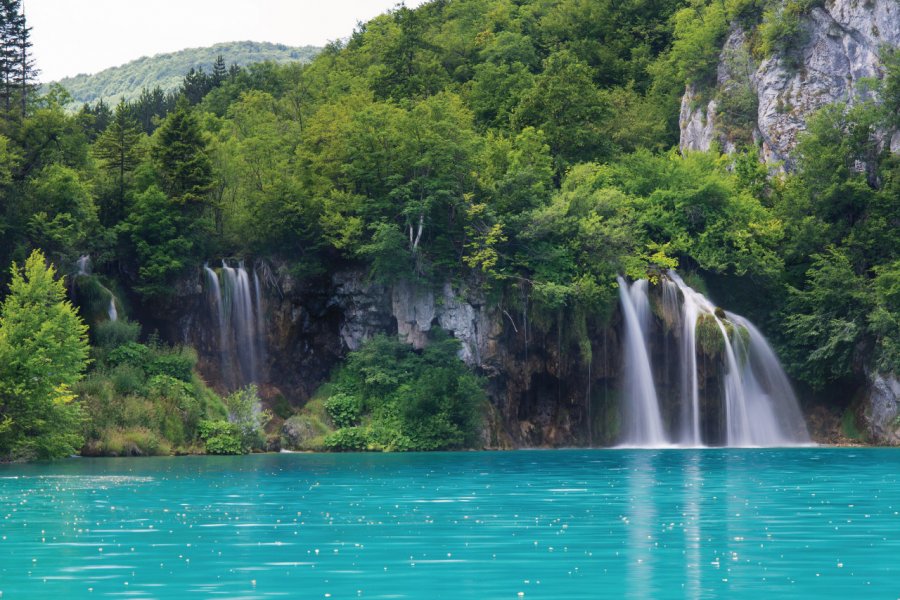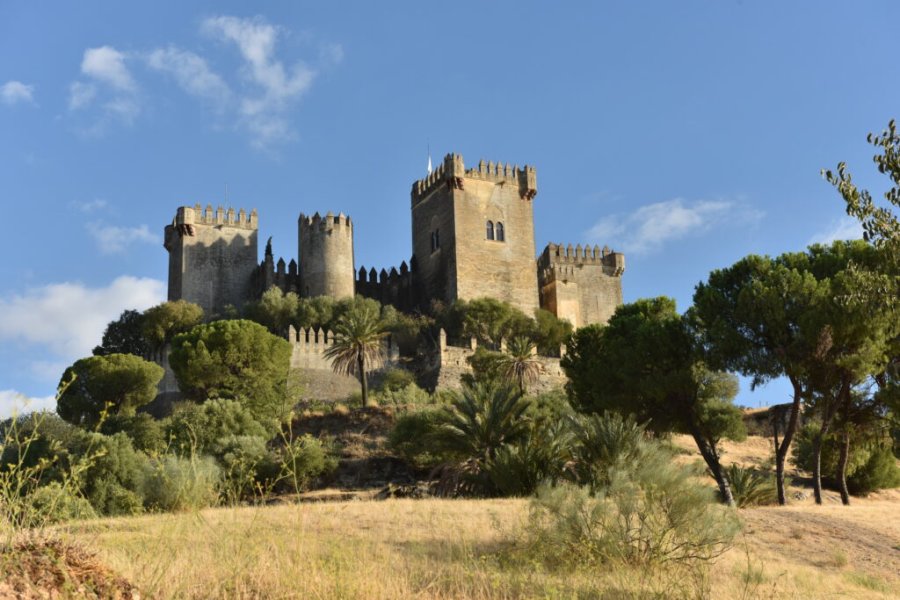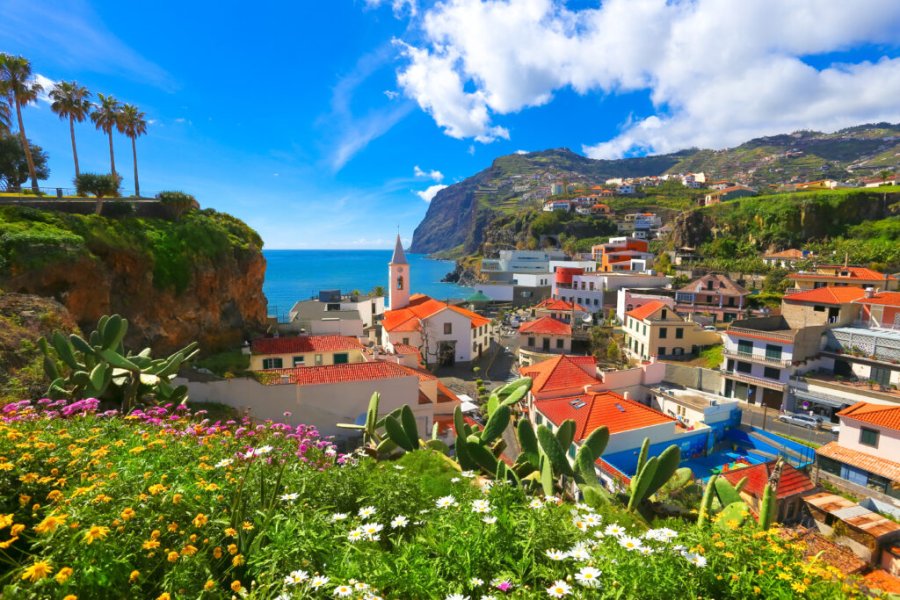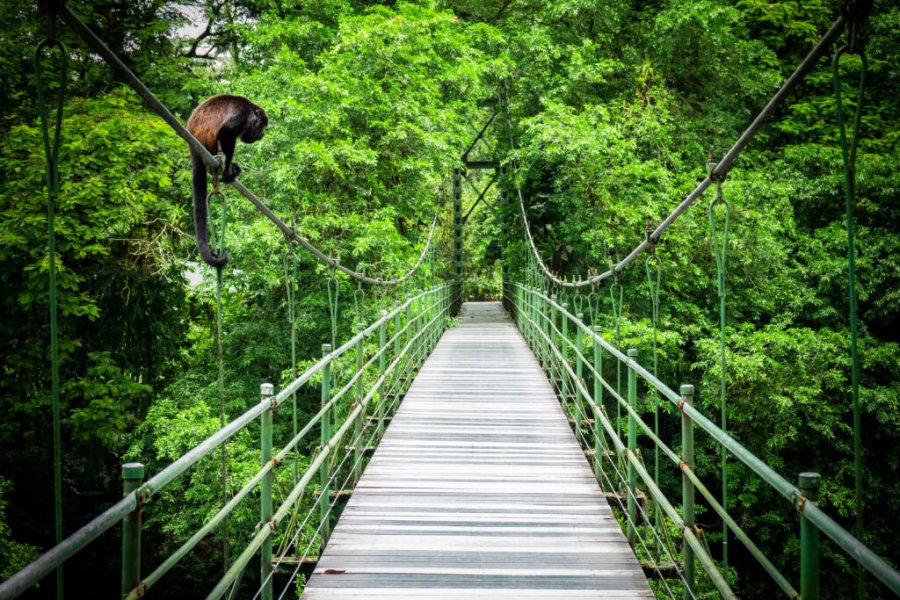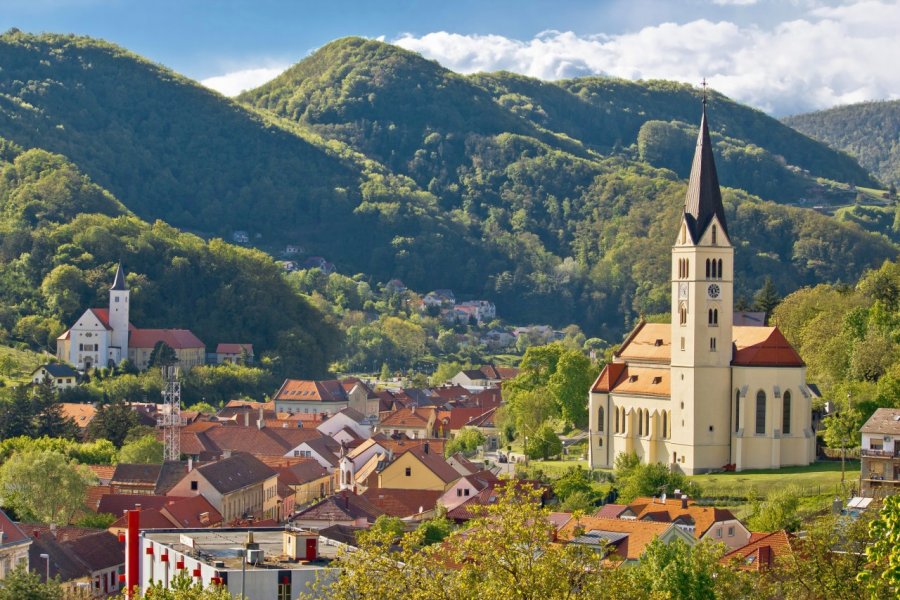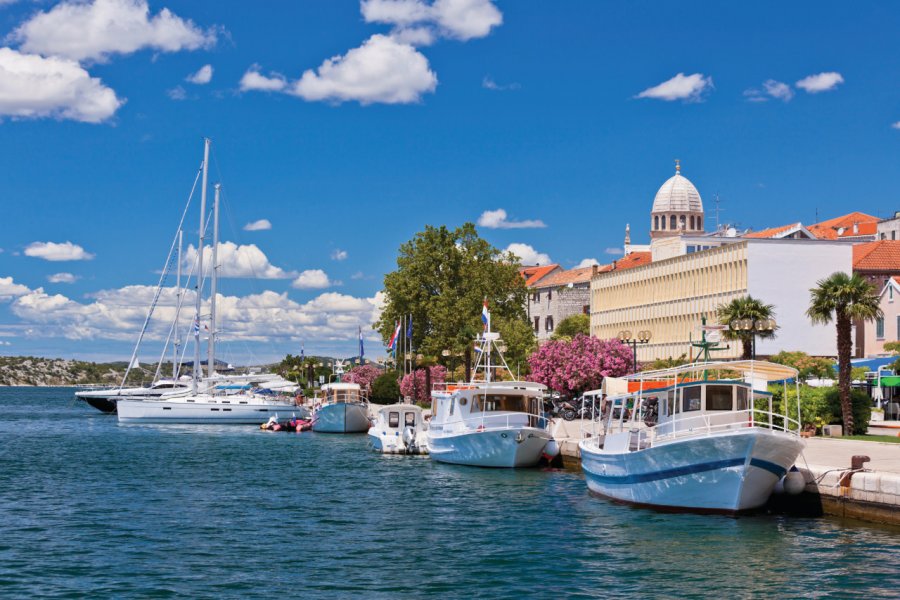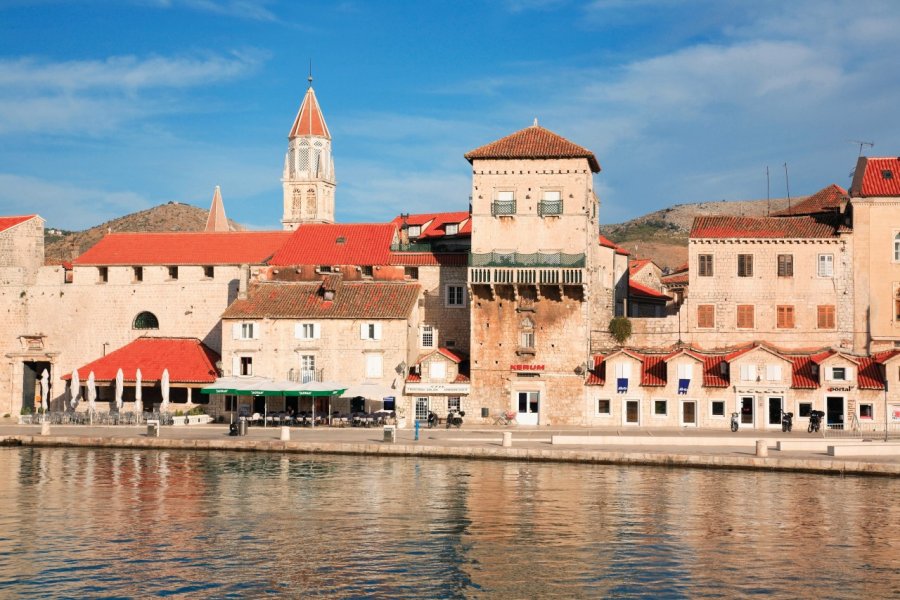Travel guide Croatia
Although it has only been independent since 1991, Croatia, a young nation, is a country with an ancient and troubled history. Born from the break-up of the former Yugoslavia, the vestiges of this conflict are still numerous. But one should not reduce Croatia to this war. Young nation of the Balkans, located in front of the Adriatic Sea, Croatia becomes a major destination of tourism in Europe, a destination to visit. The country makes first of all dream thanks to its numerous islands posed on the blue waters of the Adriatic that you will find in this travel guide: island of Krk, island of Rab, Archipelago of Cres... But it is also the country of a preserved and protected nature (one tenth of the territory!): mountains, forests, waterfalls, lakes, maritime areas... the Croatian natural heritage is exceptional and would be worth a stay by itself. Nature destination, yes. A destination of culture? Of course! Croatia is full of architectural treasures to visit, from different periods: Roman (amphitheater of Pula, Diocletian's palace in Split), Middle Ages and Renaissance (monasteries and churches in Dalmatia and Istria in particular), Ottoman period, communist period, modern period... These different periods give the cities of Zagreb, Split, Pula, Zadar or Dubrovnik an astonishing and unique architecture, which must absolutely be discovered. Finally, to visit Croatia is also to immerse yourself in a part of European history that is not well known, it is to go and meet a people with mysterious origins, still bruised by its history, which claims a strong national identity but which joined the European Union in 2013. Follow the Croatia guide to discover this fascinating destination!
What to see, what to do Croatia?
-
Book an activity
-
Customized travel
- The most beautiful cities Croatia
When to go Croatia ?
The best time to visit Croatia is from May to September, when it is warm and sunny.
However, if you have the opportunity, you may want to avoid the months of July and August. The Adriatic coastline experiences an influx of European vacationers who mingle with the local population. The beaches are crowded, as are the historical sites and national parks, especially from July 15 to August 15.
May, June and September are the best months to visit Croatia. The bulk of family tourism has not arrived or has already left, which makes the atmosphere less stifling. Hotels and private rentals generally charge "low season" rates.
In April and October, it can be a little cool to sleep in a tent or go swimming, but the Croatian coast continues to enjoy bright days, perfect for hiking, although rainfall is sometimes heavy.
In Croatia, you can swim from the beginning of June to the beginning of October (water temperature between 21 and 24 °C).
For some years now, the tourist season in Croatia has extended to the end of the year and starts in the spring, especially in cities with a rich cultural or gastronomic heritage. It is mainly a tourism of well-being, heritage and art of living (discovery of Croatia, visits, hikes, sports activities, congresses, cruises, gastronomic stays, etc.).
Suggested addresses Croatia
Travel Croatia
-
Find a hotel
-
Car Rental
-
International e-SIM package
-
Find a local agency
We can opt for ten days in the South Adriatic. Arrival in Split, for its central position and return via Zadar or Dubrovnik, depending on the part of the coastline and the different archipelagos one chooses to explore. A thematic stay can mix several points of interest, diving, yachting, yoga, spa/rubbing, walks and hikes in national parks, heritage visits, wine tourism/gastronomy, festivals, etc. Finding the ideal beach is also an option! In three weeks or even a month, you can travel all over the country. If possible, with a vehicle rented locally in Zagreb or Dubrovnik for more freedom. Croatia is very well equipped to welcome travellers, everywhere there are reception counters, motor vehicle rental companies, nautical professionals, etc., all tourism specialists who help to build the stay. One can also follow the recommendations of a guide.
Find unique Stay Offers with our Partners
How to go Croatia
How to go alone
No problem to visit Croatia by your own means. The plane is certainly the easiest way to get there. But bus, train, road or boat are also possible (only two countries separate France from Croatia). On the spot, Croatia is now a generally safe country. However, be careful in some areas: there may be mines left over from the Serbo-Croat conflict. But the areas to avoid are well marked. Finally, wild camping is forbidden.
How to go on a tour
Croatia is a major European tourist destination and can be easily visited on an organized trip or with a guide. Many tours are organized (by bus, self-tour, in group or individual, cruise in the Adriatic Sea, cultural tour...) to discover Croatia and its cities. Escapades are also possible and focus on cities. Finally, you can also opt for an all-inclusive seaside stay in certain resorts (Split or Dubrovnik in particular).
How to get around
To get around the country, flying may be possible (many domestic connections). The bus network is very dense (more than the train network which does not serve some regions well). The steep relief of Croatia only makes these bus trips long and uncomfortable. It is sometimes necessary to prefer the ferry, faster and less expensive. With the exception of frequent police checks, travelling by car (or motorcycle) is pleasant and completely independent.
Featured articles Croatia
Discover Croatia
Let's start our journey by the sea! The south of Croatia can be explored along sunny roads, from Istria to Dalmatia. The Adriatic offers vast maritime domains, long rocky coasts, archipelagos and deep seas. The beaches are equally varied. In the highlands, other images emerge: plains, hills, mountains and plateaus that often look out over the sea. Fans of Game of Thrones will be familiar with this cinematic setting.
Croatia is a young republic with a complex history. Shaped by great civilizations - Latin, Eastern, Slavic and Western - its cultural heritage is rich. Historic monuments from every era interact with contemporary art, crafts, folklore and live performances. The region's cuisine, a crossroads of influences, is delicious, and you'll find plenty of gourmet products and souvenirs to take home in your suitcases.
Pictures and images Croatia
The 12 keywords Croatia
1. #Alphabet
Until the 15th century, Croats wrote in glagolithic characters (glagoljica). The modern alphabet is in Latin and has thirty letters. However, some letters differ from our alphabet: dž, š, š, ž. In addition, the letters q, x, y and w do not exist in the Croatian alphabet or any silent letters; all letters are pronounced.
2. #Bora
This north wind comes from the Velebit, the mountainous massif of continental Croatia, which runs along the Dalmatian coast before plunging into the Adriatic Sea. Coastal cities such as Senj, Karlobag, Makarska and even Dubrovnik are subject to it. If it cools down in summer, this violent wind in winter gives the sensation of losing ten degrees on the thermometer.
3. #Tie
One of the few words that the French language owes to Croatian(hrvatski) dates from the Thirty Years' War when Croatian hussars, who came to France to join the royal army, wore a white scarf on their uniform. In 1666, the cavalry regiment received, from Louis XIV, the name of Royal-Cravates, born from the deformation of the Croatian name.
4. #Dalmatian

This beautiful, world-famous dog, native to the coastal region of Dalmatia, is recognizable by its white coat with black spots. Bishop Petar already described it in 1374. Trained to attack horses, it was used in the wars against the Ottomans. Dalmatian appears on some coats of arms of Croatian noblemen.
5. #Glagolitic
Alphabet invented in Croatia in the 9th century by two Greek monks, Saint Cyril and his brother Saint Methodius. The Croats were the only European Catholics authorized by the pope not to use Latin. The first missals in Glagolitic script were printed in 1483. This alphabet lasted in Croatia until the end of the 15th century.
6. #Kava

As in Italy, coffee (espresso, cappuccino, latte macchiato) is drunk at any time of the day, and the terraces are often full. Here we say kava. Even on working days, people take coffee breaks in bars and restaurants near their workplaces. At home, it can be prepared in the oriental (or Turkish) way.
7. #Klapa

This traditional Dalmatian a cappella singing is often heard on the radio, through windows. These polyphonies, composed mainly of men, often rehearse in churches. They perform in the street, in the squares during festivals. Sometimes, a few elders push the klapa on the terrace of a café, during a family gathering.
8. #Marenda
Even if the tradition is dying out, there are still bars where you'll see the word appear on the front. Around 10/11 a.m., it's time to go out or to prepare a savory snack. A sandwich of charcuterie, cheese or fish, which allows early-rising workers to take a late-morning break. Depending on where you are, the marenda is called a gablec.
9. #Maraschino

A liqueur obtained with sour cherries called marascas. Balzac, in A Beginning in Life, talks about Zadar, the "city where maraschino is made". In Europe in the second half of the 19th century, it was highly prized. Other evidence of the popularity of this Dalmatian alcohol at Baudelaire and even at Napoleon Bonaparte's table.
10. #Naturism
All along the Croatian coast, in Istria, on the islands, many beaches and creeks are dedicated to naturism. The ex-king of England Edward VIII and Wallis Simpson would have launched the fashion. The acronym FKK(Freikörperkultur) indicates these protected zones. One finds naturist camp-sites, equipped with modern infrastructures of type vacation village.
11. #Paški sir
On the island of Pag, this hard sheep's cheese is made. It is rolled in ash and olive oil and then matured. The taste also comes from the milk of the sheep that feed on aromatic herbs and sea salt. Often enjoyed as an aperitif, as an appetizer (antipasti), it is served with smoked Dalmatian ham (pršut), bread and wine.
12. #Lighthouse
With the progress of electronics, the valiant lighthouse keepers are becoming rarer. As a result, the lodgings are gradually being converted into cottages for vacationers thirsting for solitude and sea air. A boat brings them there with the groceries for the week and comes back to pick them up the day they want. The lighthouse keeper can help out if necessary.
You are from here, if...
In summer, you rent out your house or apartment to tourists and move in with family.
By the sea, you move pebbles to make a sea urchin-free path through the water.
You leave your towel on the rocks when you go out to lunch or at the end of the day. There are no thieves in the sea!
You eat your cheese as an appetizer(antipasti) and, in summer, you prefer red wine fresh from the fridge.
At the start of an excursion on a boat, you drink a shot of rakija offered by the captain. Good for seasickness, good for conviviality.
You don't get on the bus in your bathing suit, towel over your shoulder.
You cover your shoulders in churches and monasteries.
You know that the break-up of the former Yugoslavia is a sensitive subject. Some will talk of the war of independence, others of the patriotic war, some will praise Tudjman's memory, others will call him a fascist.

